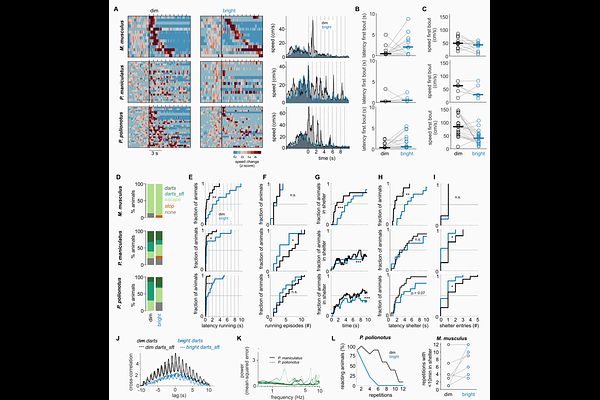Ambient Light Impacts Innate Behaviors of New-World and Old-World Mice

Ambient Light Impacts Innate Behaviors of New-World and Old-World Mice
Reinhard, K.; Vastenavondt, R.; Crevits, B.; De Boever, S.; Liao, P.-Y.; Tortella, L.; Farrow, K.
AbstractAnimals encounter predators and prey under diverse lighting conditions that signal different risks and opportunities, yet how ambient illumination shapes innate approach and avoidance behaviors remains poorly understood. Here we have systematically tested the visually guided behaviors of New-World (North American Peromyscus) and Old-World (Eurasian Mus) mice under conditions mimicking bright daylight or dim moonlit environments. We identified common and species-specific adaptations to the different lighting conditions. Across species, dim light enhanced the speed and vigor of escape responses to predator-like looming stimuli. However, species diverged in their reactions to non-threatening stimuli, with Mus musculus and Peromyscus polionotus increasing aversive behaviors under dim light, while Peromyscus maniculatus showed stronger avoidance under bright conditions. Finally, although ambient light levels had a common effect on exploratory behavior, these changes were not predictive of subsequent visually evoked behaviors. Our findings reveal that ambient lighting profoundly and differentially shapes innate behavioral strategies across species, and demonstrate that these context-specific survival responses are inherited rather than learned.